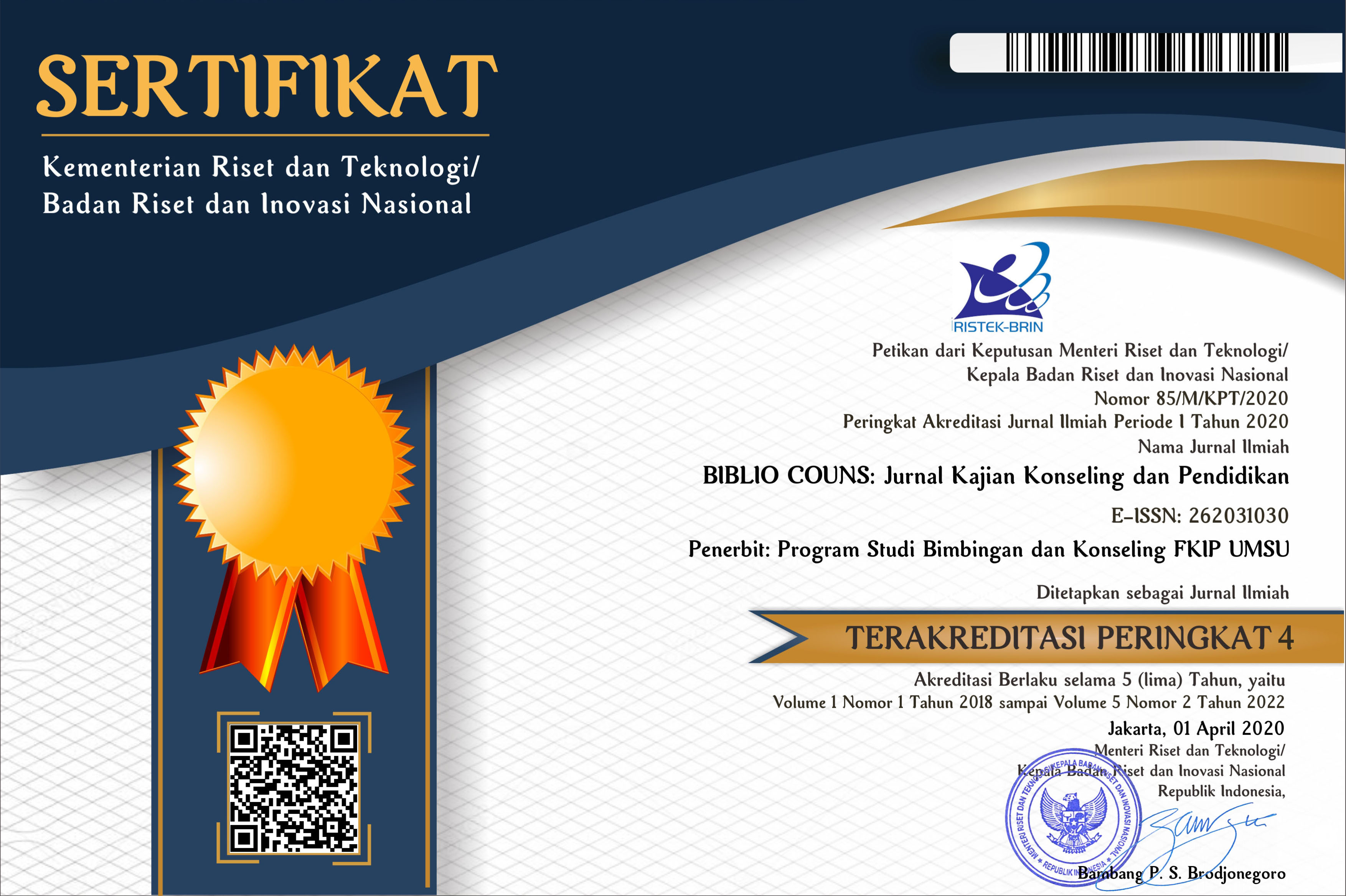Hubungan antara penalaran moral dan iklim sekolah dengan perilaku bullying
Abstract
The purpose of this research was to determine the relationship between moral reasoning and school climate with bullying behavior in class XI students of SMK Negeri 1 Ponorogo. The study population was all students of class XI and the sample amounted to 207 students who were divided into each class in all class XI. The measuring instrument uses a psychological scale of moral reasoning, a psychological scale of school climate and a psychological scale of bullying behavior. The results of this study indicate that there is a significant relationship between moral reasoning and school climate with bullying behavior among students of SMK Negeri 1 Ponorogo (p = 0.015) (R = 0.537) (F = 0.288). So that overall it can be concluded that the lower the moral reasoning, the higher the student's bullying behavior, the higher the school climate, the lower the student's bullying behavior, and the higher the moral reasoning and the school climate, the lower the student's bullying behavior.
Keywords
Full Text:
PDFReferences
Agrawal, N. dan K. (2015). Religiosity as a Predictor of Emotional Stability among Adolescence. The International Journal of Indian Psycology, 2(4), 182188. https://doi.org/1170-1439541814
Agustiani, H. (2009). Psikologi Perkembangan. Aditama.
Arian, P. (2010). Lets End Bullying: Memahami, Mencegah, dan Mengatasi Bullying. PT Elex Media Komputindo.
Arikunto, S. (2010). Manajemen Penelitian. Rineka Cipta.
Asrori, M. dan Ali, M. (2005). Psikologi Remaja Perkembangan Peserta Didik. Bumi Aksara.
Basyirudin, F. (2010). Hubungan Antara Penalaran Moral Dengan Perilaku Bullying Para Santri Madrasah Aliyah Pondok Pesantren Assaadah Serang Banten. Universitas Islam Negeri (UIN) Syarif Hidayatullah.
Hardiyanto. (2016). Teori Dan Pengembangan Iklim Kelas & Iklim Sekolah. Kencana.
Komisi Nasional Perlindungan Anak. (2013). Laporan Akhir Tahun 2013: Wujudkan Indonesia menuju Ramah Anak dan Bebas Kekerasan.
Lowther, D.L., & Ross, S. M. (2003). Impact of the Connect School Reform Design on Classroom Instruction, School Climate, and Student Achievment in Inner City Schools. Journal of Education for Students Placed Ar Risk (JESPAR), 8(2), 215246. https://doi.org/DOI: 10.1207/S15327671ESPR0802_3
Maghfiroh, Ulfah dan Rachmawati, M. A. (2017). Hubungan Antara Iklim Sekolah Dengan Kecenderungan Perilaku Bullying. Jurnal Psikologi Fakultas Psikologi Dan Ilmu Sosial Budaya.
Ong, F. (2003). Bullying at School. California Departement of Education.
Orpinas, P & Horne, A. M. (2006). Bullying Prevention, Creatting a Positive School Climate and Developing Social Competence. America Psycological Association.
Petrie, K. (2014). The Relation Between School Climate and Student Bullying. TEACH Journal of Christian Education, 8(1), 2634.
Santrock, J. . (2010). Life-Span Development, Perkembangan Masa Hidup. Erlangga.
Setiono, K. (2009). Psikologi Perkembangan. Widya Padjajaran.
Sugiyono. (2010). Metode Penelitian Pendidikan Pendekatan Kuantitatif, kualitatif, dan R&D. Alfabeta.
Sugiyono. (2014). Statistika untuk Penelitian. Salemba Humanika.
Sullivan. (2000). The Anti Bullying Handbook. Oxfort University Press.
Thapa, A., Cohen, J., DAlessandro, A, H., dan Guffey, S. (n.d.). School Climate Research Summary. National School Climate Center, School Climate Brief.
Yulinar, P. H. (2017). Hubungan Antara Iklim Sekolah dan Perundungan pada Siswa SMK A Samarinda. Naskah Publikasi Skripsi.
Yusuf, S. (2009). Psikologi Perkembangan Anak dan Remaja. Rosdakarya.
DOI: https://doi.org/10.30596/bibliocouns.v4i1.5694
Refbacks
- There are currently no refbacks.
Biblio Couns: Jurnal Kajian Konseling dan Pendidikan
Universitas Muhammadiyah Sumatera Utara
Kampus Utama
Jl. Kapten Muchtar Basri No.3, Glugur Darat II,Medan
Sumatera Utara-20238
E-mail: jbcons@umsu.ac.id



